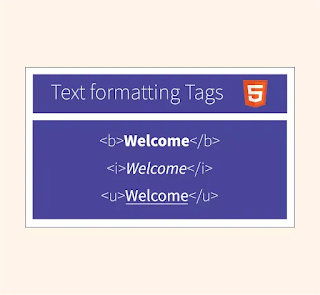HTML comments are a way to include notes and annotations within an HTML code that are not visible on the web page when it is rendered in a browser. They are primarily used to provide instructions, explanations or reminders to the developers who are reading the HTML code.
HTML comments are created by using the following syntax:
<!-- Your comment here -->
Anything that is written between the "<!--" and "-->" tags is considered a comment, and it will not be displayed in the final output of the webpage.
HTML comments can be placed anywhere in the HTML code, including within the opening and closing tags of an HTML element. However, they should be used judiciously and only for important information that needs to be conveyed to other developers who may be working on the same codebase in the future.
In this example, we have included two HTML comments that describe the content of each paragraph. These comments are enclosed in <!-- and --> tags and appear immediately above each paragraph. When the web page is rendered in a browser, these comments will not be visible on the web page itself, but they will be visible in the HTML code if anyone needs to review or modify the code in the future.
Output for above code is given below:
In general, it is a good practice to include comments in HTML code in the following positions:
At the beginning of the file: Include a comment at the beginning of the HTML file to provide a brief description of the purpose of the page, the author, and the date of creation. This information can be helpful for anyone who needs to review or modify the code in the future.
Before each section: Include comments before each major section of the HTML code to describe its purpose and contents. This can be especially helpful for larger pages with multiple sections, as it can make it easier for developers to navigate and understand the structure of the page.
Within sections: Include comments within sections to describe individual elements, such as headings, paragraphs, or images. This can be useful for providing context and explaining the purpose of each element, as well as for identifying any potential issues or areas for improvement.
It is important to note that comments should be used sparingly and only for important information that needs to be conveyed to other developers. Overuse of comments can make the code difficult to read and understand, so it is important to strike a balance between providing helpful information and avoiding unnecessary clutter.
These comments can be useful for anyone who needs to review or modify the code in the future, as they provide context and explanation for the structure and contents of the page.
Practice Time!
- Create a simple webpage that provides information about a local restaurant. Use headings to organize the content into sections such as menu, hours of operation, and location. Include comments to describe the purpose of each section and element, and use paragraphs to provide details about each section.
- Design a webpage that showcases your favorite hobby. Use headings to organize the content into different sections, such as equipment needed, tips and tricks, and frequently asked questions. Include comments to describe the purpose of each section and element, and use paragraphs to provide more detailed information.
- Develop a webpage that presents a collection of quotes on a specific topic. Use headings to separate the quotes into categories, such as inspiring, funny, and thought-provoking. Include comments to describe the purpose of each section and element, and use paragraphs to provide some context for each quote.
- Create a webpage that features a personal blog about a recent vacation. Use headings to organize the content into sections such as itinerary, highlights, and recommendations. Include comments to describe the purpose of each section and element, and use paragraphs to provide more detailed information about each section.
- Design a webpage that showcases your favorite books or movies. Use headings to organize the content into different categories, such as fiction, non-fiction, and documentaries. Include comments to describe the purpose of each section and element, and use paragraphs to provide more detailed information about each selection.




No comments:
Post a Comment